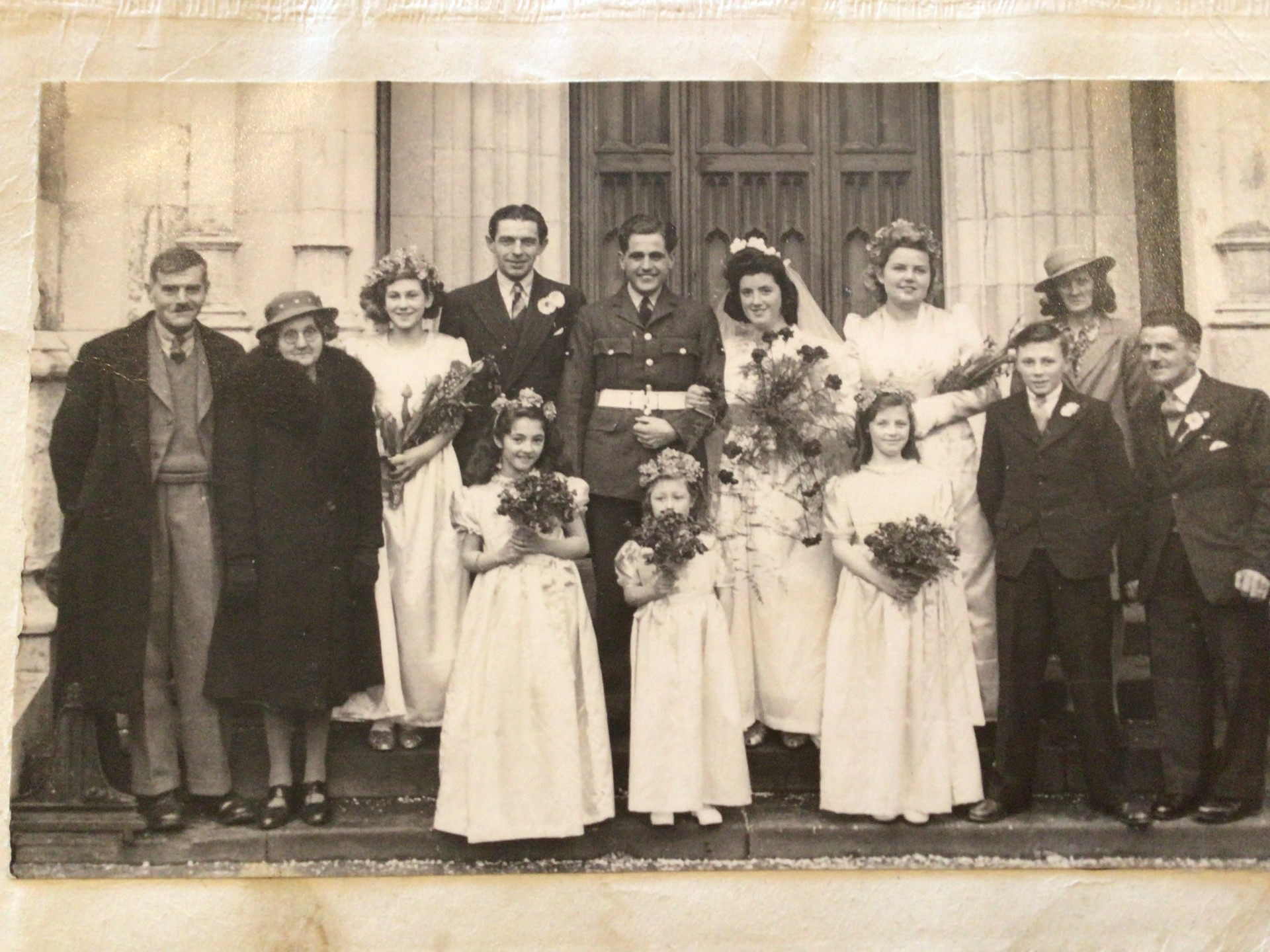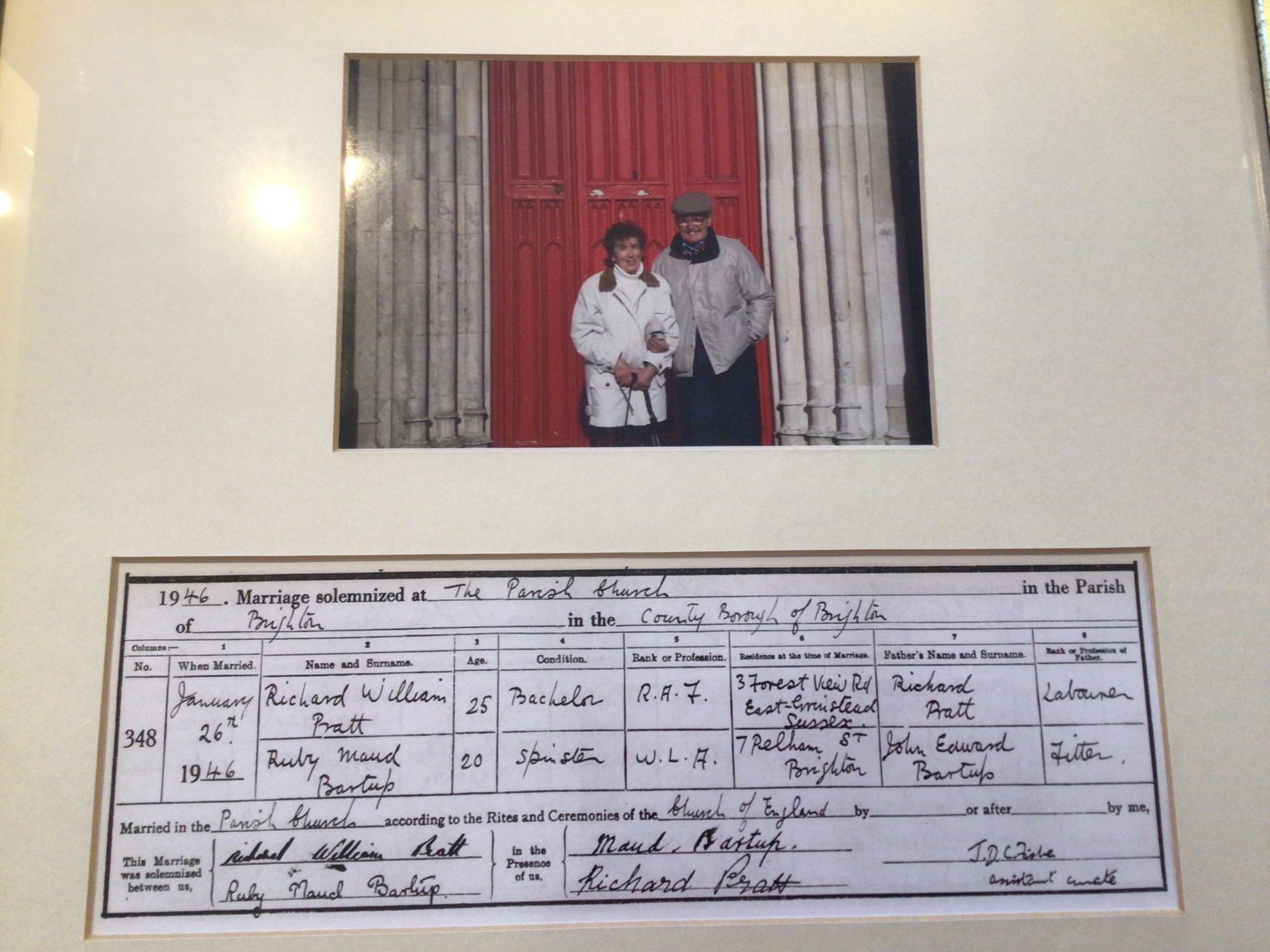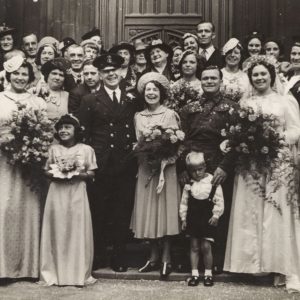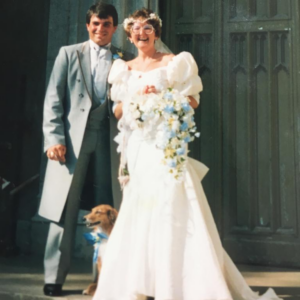Weddings in the 1940s
Richard and Ruby – A Love that Never Died
Richard and Ruby Pratt both served their country during the Second World War. Richard was a firefighter in the Royal Air Force, and Ruby was in the Women’s Land Army.
When they got married on 26 January 1946 at St Peter’s Church, Richard was 25 and Ruby, whose maiden name was Bartup, was 20. She lived in Pelham Street, close to St Peter’s. His father was a labourer, and her father was a fitter.
After the war, Richard was a bus driver. They lived with Ruby’s parents for a while before they moved to West Hoathly, West Sussex. They had two daughters in 1950 and 1953. Around this time, they became proud owners of a black and white television set, and despite its tiny size compared to today’s models, friends and family would flock to watch it – often unannounced!
In 1958, they moved again to West Wantely on the outskirts of Storrington village, where they took on a nursery. They worked extremely hard growing all kinds of varieties of fruit, vegetables, flowers and plants. At Christmas they sold holly wreaths, Christmas trees and decorations. One claim to fame, spoken about for years to come, was that Sir Lawrence Olivier bought some of their produce when he was passing by.
Later, they moved into the village and Richard became a self-employed landscape gardener. They travelled, loved swimming and danced, for which they won many medals. Ruby was also very interested in yoga and could stand on her head well into her eighties.
Three years after they had moved to Norfolk in 2005, Richard died after an illness during which Ruby cared for him with unwavering dedication. Being very independent, Ruby continued to live on her own until her death in 2022, aged nearly 97.
Both Richard and Ruby had a very special place in their hearts for St Peter’s Church in Brighton as it marked the beginning of their wonderful life together and a love that never died.









‘This project is kindly funded by Historic England as part of the Everyday Heritage - Working Class Histories. We are grateful to them for this funding.’